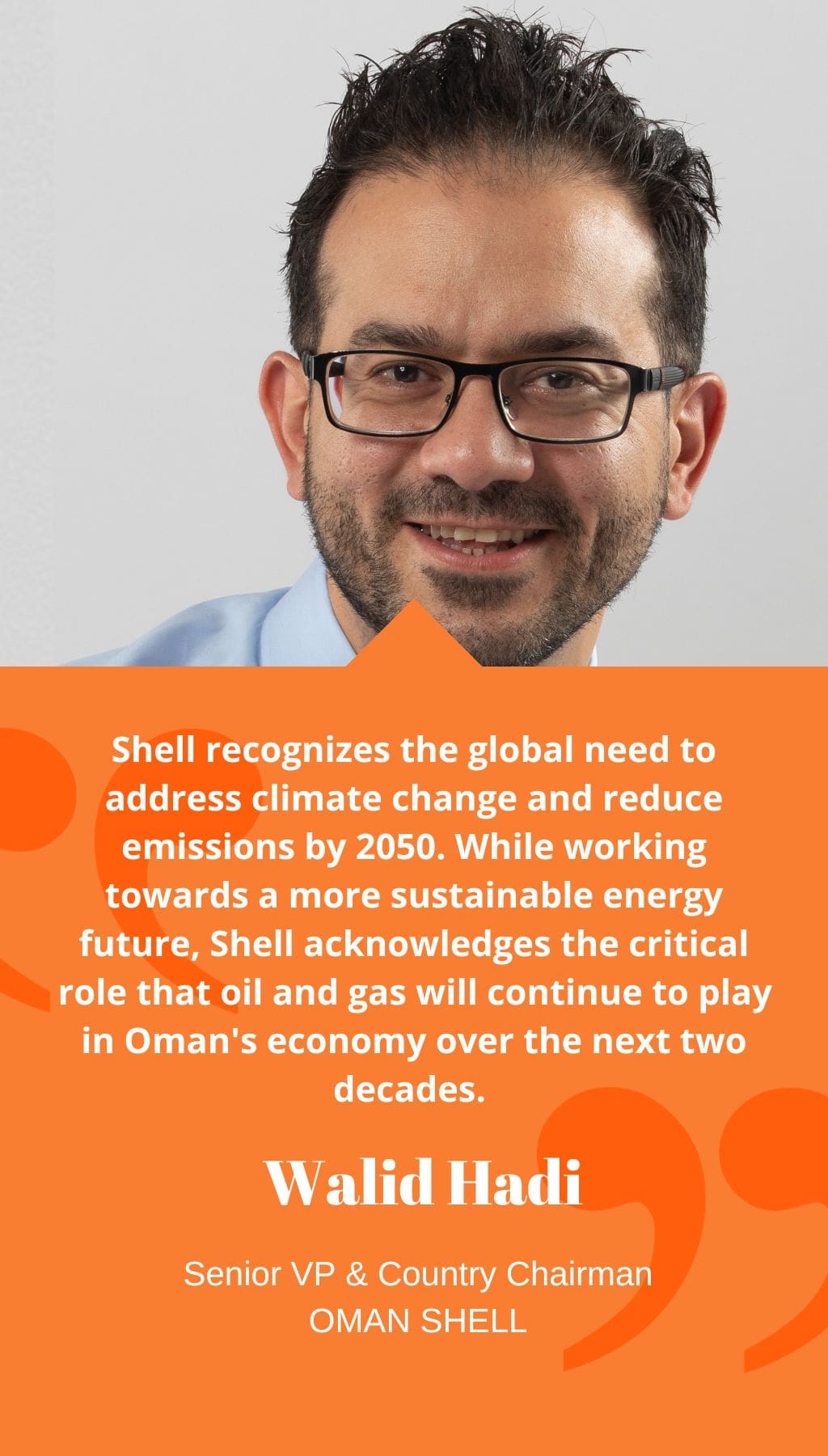
- Oman | 9 June 2021

What are the defining features of Shell’s operations in Oman, and what are some of the highlights of the past year?
Shell has a longstanding presence in Oman since the 1930s, establishing a strong partnership with the government and creating what we call a Heartland position in the country. Through joint ventures with the Government of the Sultanate of Oman, Shell has made significant contributions to Oman’s oil and gas production. For instance, we own a 34% interest in PDO, which accounts for about 65% of the country’s oil production. This joint venture has grown into one of the most capable operating companies in the global oil and gas production sector. We also have a 30% interest in Oman LNG, a liquefaction plant that plays a vital role in liquefying gas for international markets. Additionally, Shell owns just below a 50% stake in Shell Oman Marketing Company, a prominent company in Oman’s fuel sector with around 200 fuel stations and operations serving the aviation and heavy industry sectors. In recent years, Shell has embarked on a new chapter of partnership with Oman, focusing on investments in the energy transition and new energies, including gas production and renewable-based hydrogen. Highlights of the past year include signing a concession agreement with the Omani government for a multibillion-dollar investment to boost gas production and the launch of Oman’s first industrial-scale solar plant.
How is Shell’s business model evolving to adjust to renewable targets?
Shell recognizes the global need to address climate change and reduce emissions by 2050. While working towards a more sustainable energy future, Shell acknowledges the critical role that oil and gas will continue to play in Oman’s economy over the next two decades. However, Shell is committed to producing oil and gas with minimal carbon impact. Alongside our Omani joint ventures, we respond to the government’s needs for economic growth and employment while transitioning towards a net-zero carbon future. Shell is investing in renewable energies such as solar, wind, and renewable-based hydrogen. The vision is to generate 60% to 80% of value in Oman from clean energy sources by 2050, while ensuring that remaining hydrocarbon resources are among the most carbon-resilient worldwide. This approach allows Shell to contribute to Oman’s economic stability while also positioning itself as a leader in the energy transition.
What innovative technologies is Shell currently exploring and deploying to boost sustainable production across its operations?
Shell is introducing advanced technological solutions from its global portfolio to enhance traditional businesses in Oman. One example is the use of horizontal wells technology, which improves reservoir performance and production efficiency. Additionally, Shell is focused on technological advancements in safety, including the creation of digital twins. Shell’s first digital plant twin globally was developed for the Oman LNG facility, allowing for optimization, reliability, and predictive maintenance. Shell believes that the industry will experience exponential technological change in the next decade, particularly in areas like electrolysis and overall technological advancements.
What are Shell’s short-term targets and growth priorities for the year ahead?
Shell’s short-term targets include bringing block 10, a significant component of its operations in Oman, to full strength, contributing to Oman’s economic growth. The company aims to start exploring for more gas in block 11, which is strategically important for both Oman and Shell. Shell is also focused on advancing its blue hydrogen ambitions in Oman and making substantial investments in renewable-based hydrogen. These initiatives align with Shell’s vision for the energy transition and its strategic intent to power progress, supporting Oman’s goals for mitigating climate change and ensuring a sustainable future.














